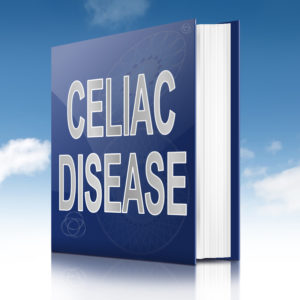Talking to many people about fitness and food on a daily basis as I do, I sometimes get the feeling that some people treat celiacs as hypochondriacs and believe they are just participants in the latest food craze to hit the healthy eating scene.
This may be the case with a select few, but having first hand experience with a family member in her late thirties, who was medically tested positive to the high end of the celiac disease scale, I can assure you it was finally good to be able to put a finger on the hell she was experiencing.
With more than 200 potential celiac disease symptoms I strongly suggest that now is an excellent time to take a few more minutes to read this informative article from verywell health: An Overview of Celiac Disease.
If you suffer from Celiac Disease then you will understand how difficult it can be sometimes to buy and eat a balanced diet.
Your nutritional considerations can be a nightmare.
 So many foods these days are processed and prepared with wheat as an ingredient and to make things even harder, wheat and gluten can be found in beverages, as well as foods.
So many foods these days are processed and prepared with wheat as an ingredient and to make things even harder, wheat and gluten can be found in beverages, as well as foods.
A celiac’s hypersensitivity to gluten can lead to 300 known symptoms ranging from simple abdominal bloating to dental defects.
This means the predominance of gluten in many common foods can cause any number of unwanted health concerns.
It is not always easy to identify foods containing gluten.
This is because sneaky food producers and manufacturers use terms and phrases other than “gluten” to identify the presence of that chemical in food. Most all-purpose flours, some couscous, semolina and pasta noodles contain high levels of gluten.
When you see food label ingredients like einkorn, triticale and cereal extract you may not realize that these are indicators of gluten.
When processed meats, some canned and frozen vegetables, as well as most commercial cereals contain gluten, how do you get all the healthy nutrients and vitamins you need?
I suggest you start practicing the following 6 tips and you will ensure good nutrition while also adhering to a gluten-free diet.
1. Get Professional Help
When you have a problem with your car’s engine, generally you would take it to a mechanic. And you don’t try to fix electrical problems yourself, you choose to call an electrician instead. So use the same thought process if you are having a tough time enjoying a healthy diet while suffering from coeliac disease.
There are registered nutrition coaches and dietitians who specialize in treating celiac disease as well as advising and putting together for you a celiac disease diet.
These health professionals have devoted their lives to helping you stick to a balanced diet that is high in nutrition as well as gluten-free.
Getting an expert involved makes a lot of sense, since celiacs can suffer from bone loss, arthritis, migraine headaches and even infertility if they don’t keep gluten out of their diet.
2. Do Your Homework Before Doing Your Grocery Shopping
Put the power of the Internet to work for you.
A quick search for “printable celiac shopping list” returned more than 61,000 results in Google. Searching for “shopping list celiac disease” produced more than 185,000 results.
The information is out there and it is freely available. Plus, it is pretty easy to access info from your smartphone, tablet or PC. You can check out this downloadable PDF from coeliac Australia which is their Endorsed Product List or have a look at the NFCA getting started guide. Joy Bauer also has a gluten free shopping list that is worth a look.
3. Celiac Disease Diet – Load Up on Fresh Fruits and Vegetables
 Virtually all fresh fruits and vegetables are free of gluten which is great news.
Virtually all fresh fruits and vegetables are free of gluten which is great news.
You can even enjoy most frozen veggies and fruits, as long as they have no additives, sauces or breading. Dried peas and beans are also safe for celiacs.
Fruits, vegetables, beans and peas provide a wealth of cooking opportunities, extreme versatility in your diet, and deliver just about all of the nutrients and other nutritional goodies a balanced diet needs.
4. Flavour Your Food with Fresh Herbs and Spices
Turmeric has been used for thousands of years as both a medicinal herb and a spice for food. It is a natural anti-inflammatory and helps your body protect against toxins and dangerous free radicals.
Ceylon Cinnamon actually lowers blood sugar levels to a healthy range. Sage has the ability to improve your memory. Cayenne pepper offers anticancer properties.
The lesson here?
Herbs and spices are great for flavouring your food, but that is not their only function. They help balance your diet and lead to better health by delivering so many bodily benefits.
Avoid spice and herb mixes, or at least check their ingredients before buying and using them.
5. Drink Lots of Water
Most people do not get enough water on a daily basis.
The average adult human body is, on average, 57% to 65% water but can get as low as 45% if you are overweight.
On any normal day we sweat, breathe or pee away about 5% to 10% of our water so this needs to be replaced. By losing as little as one litre (2 pints) we start to lose concentration, alertness and some cognitive function so to function properly we need to keep topped up.
Being dehydrated also causes headaches so next time your head starts to thump or bang, before reaching for the Panadol, have a big glass of water. Your headache should be gone within ten to twenty minutes.
Since so many foods are “under the radar” providers of gluten, it is important that those suffering from coeliac disease consistently flush their body of harmful chemicals, toxins and gluten-related ingredients.
A properly hydrated body promotes mental, physical and emotional health. For coeliacs, drinking lots of water ensures your body consistently flushes out any gluten that has sneaked into your diet. It is a good idea to have a big glass of water as soon as you wake up in the morning.
6. Don’t Ignore a Possible Vitamin D Deficiency
Many celiac sufferers are deficient in vitamin D.
Vitamin D is sort of unique. It is different because we don’t get it from an outside food source like other vitamins. Your body actually manufactures any vitamin D you need. It isn’t actually a true vitamin, but is a secosteroid that is created when your skin is exposed to sunlight.
Low levels of vitamin D can lead to a weakened immune system, neurological problems, heart disease and poor bone and joint health.
Just 15 to 20 minutes of sun on your skin is usually enough to provide all the vitamin D your body needs so it is a really good excuse to go and sit in a park at lunch time to eat and have a change of scenery. It will also help reduce your stress after a hard mornings work.
If you are concerned you can schedule a vitamin D, 25 Hydroxy blood test to determine if you are deficient in this important nutrient.
I hope you found this info helpful…….if so, please like and share.
Cheers – John – your Active Ageing Mentor and Coach.
Leave a Reply